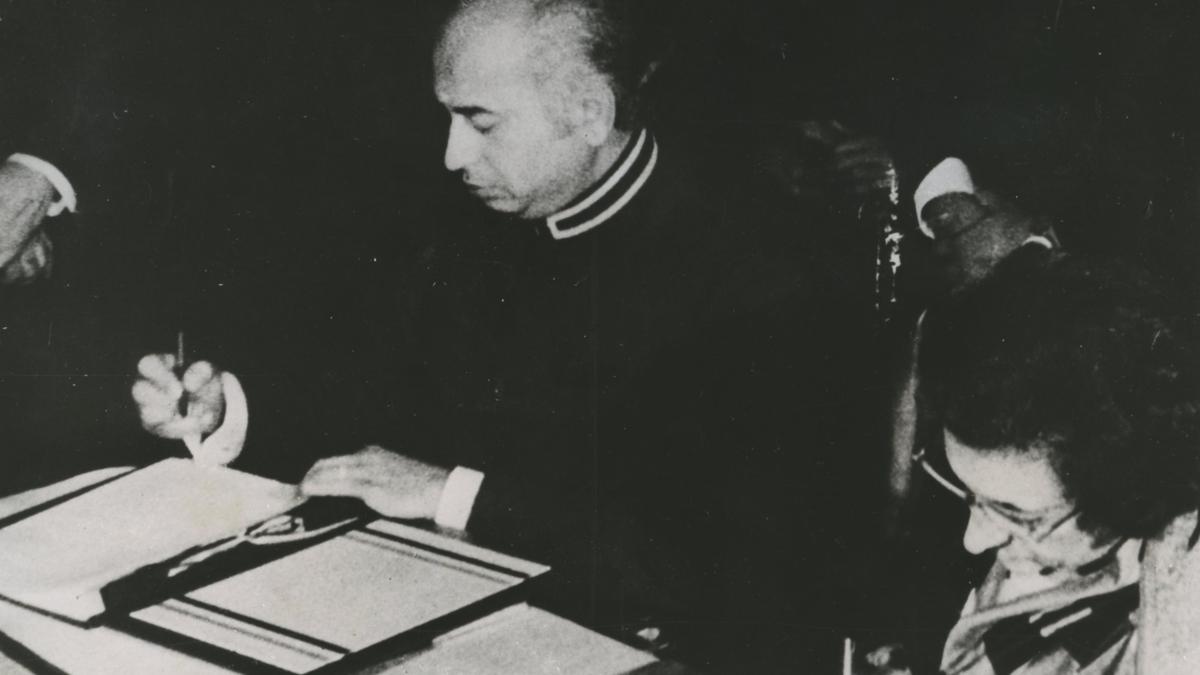Elon Musk pivoted from a months-long debacle at Twitter to showcase brain-controlled devices built by his Fremont-based technology company Neuralink that aim to help people with spinal cord injuries move again.
Called brain-computer interfaces or “input-output devices for the brain,” Neuralink’s device – called Link – builds on existing work to help those with paralysis regain function in their body using their thoughts. The device will be ready for the first human clinical test in six months, Musk said, once the final paperwork is approved by the Food and Drug Administration. Thus far, the technology has been tested only in animals.
Over 30,000 viewers tuned in for the live discussion Wednesday night hosted by Musk, who appeared on a black curtained stage between two large TVs. The presentation mimicked early-2000s Apple events.
Musk’s explanation of Neuralink’s vision ranged from medical applications – restoring independent movement to someone with a spinal cord injury – to science fiction, enhancing the cognition of an able-bodied person using artificial intelligence. Neuralink’s path from prototype to commercial brain-computer interface product will “solve many brain injury issues along the way,” Musk said.
Neuralink’s core technology is composed of tiny wires inserted into the brain and attached to a quarter-sized module flush with the skull. The module sends recorded brain signals to a computer. The company’s technology is built on decades of research into brain-computer interfaces. Since the late 1900s, researchers tapped into the electrical signals sent between cells in the brain, spinal cord or nerves using electrical wires and computers. Clinical brain-computer interfaces debuted in 2004 with tetraplegic patient Matt Nagle as he wowed the world with mind-controlled computer cursor movement. More recently, a clinical study at UC San Francisco helped a stroke patient unable to speak regain some communication using a brain-computer interface.
UCSF partnered with the brain-computer interface company Blackrock Neurotech, based in Salt Lake City. After dozens of clinical trials, Blackrock is years ahead of Neuralink in the FDA approval process for a marketable commercial product. Blackrock CEO Marcus Gerhardt said in an email their device should hit the market within the next year.
“It’s great to see (brain-computer interface technology) in the spotlight, but much of what Neuralink showed has already been demonstrated by other companies and research labs around the world,” Gerhardt said. “Demos are one thing, but the moment I’m most excited for is when I’ll get to say to a patient, ‘This is yours. Take it home.‘”
Other researchers praised Neuralink’s focus on incremental engineering progress and quality control. “They’re clearly focused on refining and optimizing the technology that they’re developing,” said Matt Leonard, associate professor in neurological surgery at UCSF.
Still, experts acknowledged Neuralink is far from delivering on Musk’s promise to restore “full-body functionality to someone who has a severed spinal cord injury.”
“The Link in its current state isn’t capable of doing that,” said Laura Gwilliams, a postdoctoral researcher at UCSF, referencing the Link device’s inability to recreate the complicated electrical networks within the brain necessary to complete simple movements.
“If we are able to communicate with every neuron in the brain in the way that those neurons themselves communicate, it would be possible,” she said.
Compared to Neuralink’s past news conferences, company scientists delivered most of the news at Wednesday’s event. David Bjånes, a postdoctoral researcher at the California Institute of Technology, said he hopes this indicates the company’s future willingness to collaborate with academic scientists.
Going “the Apple route,” however, and withholding from researchers the raw data of future clinical trials, “would make it much more difficult to do fundamental neuroscience,” Bjånes said.










![Best Weight Loss Supplements [2022-23] New Reports!](https://technologytangle.com/wp-content/uploads/2022/12/p1-1170962-1670840878.png)




